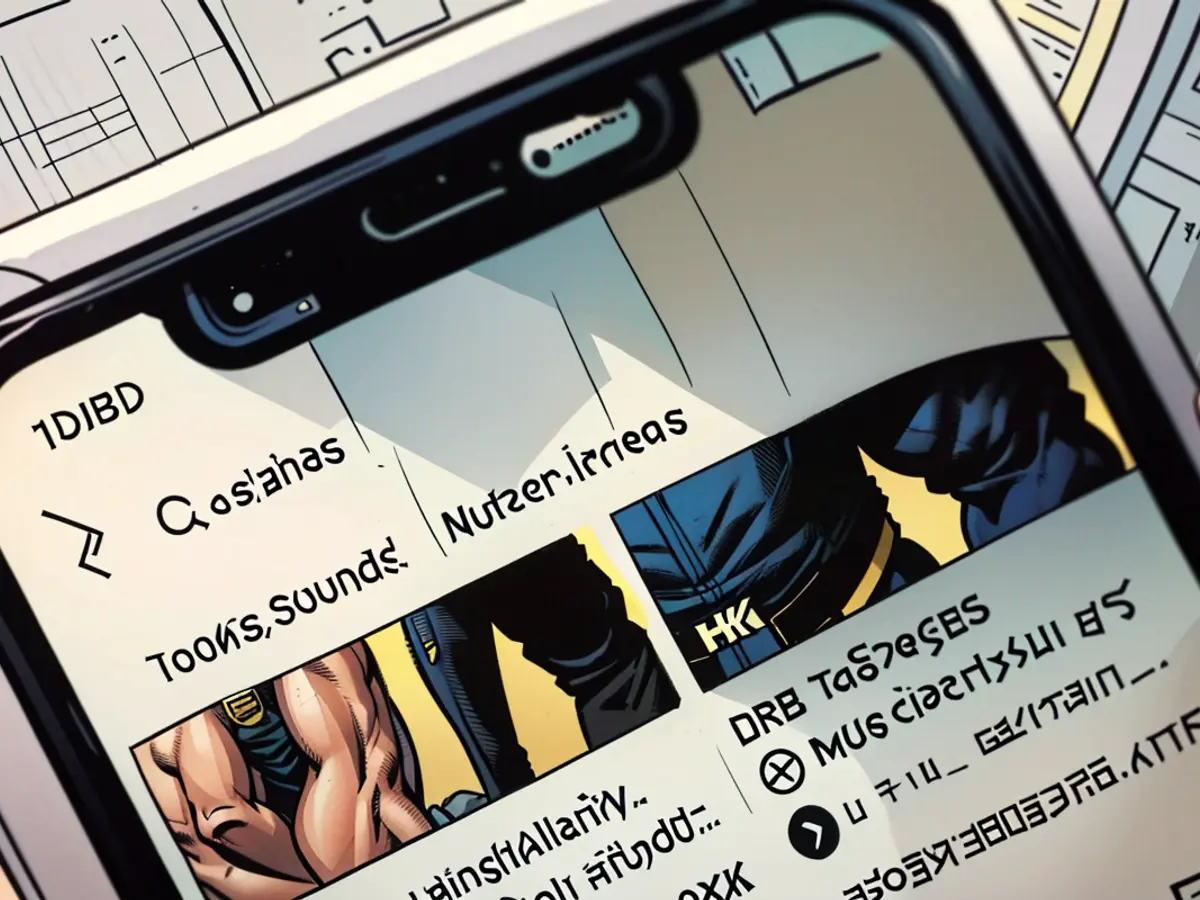- "Talahons": trending types or racist cliché?
Young men, often with a migrant background, sport counterfeit luxury clothing and strut through the city center with fanny packs, training pants, and gold chains. Some provoke with outdated views on women. That's the stereotype. So-called "Talahons" are currently causing a stir and sometimes racist discussions about migration and youth culture on social media.
Now, the term is nominated for "Youth Word of the Year" and is getting even more attention. What exactly is behind it - and why can the word be problematic?
Firstly, the term is said to come from Arabic, according to the Langenscheidt publishing house, which crowns a youth word each year. "Tahal lahon" means "come here" and is supposedly used for people with stereotypical characteristics or behavior.
On TikTok or Instagram, especially young people stage themselves as the supposed typical Talahon, for example with a Gucci cap and shaved sides ("sides on zero"). Other posts describe their views on women, such as not allowing their potential girlfriend to go to the pool alone.
These posts are often set to the song "TA3AL LAHON" by rapper Hassan. He published the song ("I'll give you a stab, I'm the patron") in 2022, with the music video stating that the lyrics are fictional and the video is for entertainment purposes only. Now, the song is going viral on social media.
Not stopping there, an Edeka store in Lower Saxony had even set up a shelf labeled "Talahon", containing trendy products like sodas or chocolate bars also found in vending machines. However, due to controversial discussions about the term, the store decided to remove the sign above the shelf.
Expert: "There's no single Talahon"
"There's no single Talahon. In the end, it's a very heterogeneous and not a uniform phenomenon," says Gabriele Rohmann, co-director of the Archive of Youth Cultures in Berlin. Not all Talahon videos are serious; many satirize the trend. One user, for example, acts like a doctor behaving like a Talahon.
Others use their videos to hold a mirror up to society. However, "some feel empowered by this and it plays into themes of misogyny, which is problematic," Rohmann says. "We must show these young people the boundaries and work with them to question and abandon these attitudes and behaviors."
The style of Talahons is not new, according to Rohmann. It has simply spread more widely due to the popularity of Hassan's song, even among female users who present themselves as the female counterpart - Talahinas. For Rohmann, this is a "game between boys and girls" observed in various youth cultures.
However, not everyone approves of the trend. It provides material for right-wing populist or racist comments. Rohmann warns against generalization. One must consider each case individually and look closely. "It's the same as with gangster rap, which is often quickly and unfairly condemned, despite having many nuances and interpretations."
The processes of stigmatization have been ongoing for a long time, Rohmann says. "The 'New Right' focuses on these youth being a symbol of failed integration and everything being a catastrophe. These clichés and prejudices have existed for many years, as seen in the discussions around the 2015 New Year's Eve incidents in Cologne."
With the term "New Right," a scene is described that advocates for an ethnically homogeneous state with authoritarian tendencies, while distancing itself from the right that refers to National Socialism.
People in this scene and their respective parties have used such trends to strengthen their own discourses. "This is a very dangerous story because this stigmatization is not justified," says Rohmann. "Moreover, it leads to young people with a migration background or perceived migration background feeling excluded by the right, which can cause them to react aggressively in some cases."
Langenscheidt: Youth slang has always included controversial words
The Langenscheidt publishing house also follows the discussion, according to its own statements. Teenagers have often submitted "Talahon" for the shortlist of the Youth Word. It shows how quickly and dynamically youth slang and its meaning and usage can develop. It has always included positive, negative, and controversial words.
"The interpretation and usage of the word is not yet clear or final, which is why we consider it a good example of living youth slang, even if its usage is ambivalent and not always positive," the publisher said. If the usage develops clearly towards stigmatization and defamation in the future, it reserves the right to remove it. Removing it now would contribute to the accusation of censorship. The publisher has decided to support the expected debate. The Youth Word should be a reflection of the times, it was further stated.
Currently, you can vote for the top 3 from a total of ten candidates. The final election will take place among the finalists until October 8. The winning word will then be announced at the Frankfurt Book Fair.
My friend and I have been following the rising popularity of the term "Talahon" on social media, with interest. Despite the controversy surrounding the word, my friend finds the fashion trend associated with it amusing, often attempting to mimic the style in his TikTok videos.
The use of the term "Talahon" in various youth cultures is not limited to young men, as my friend's sister has also started experimenting with the style, creating her version of the Talahina trend on Instagram.








